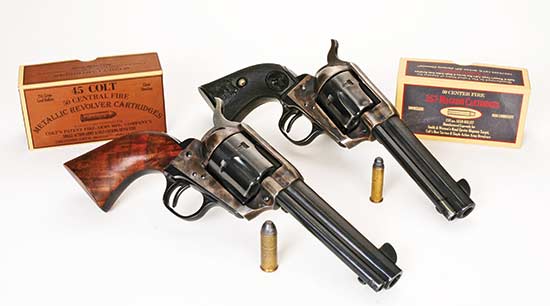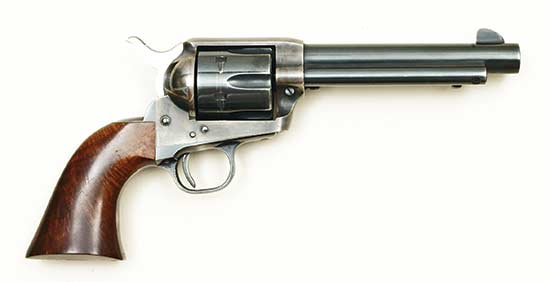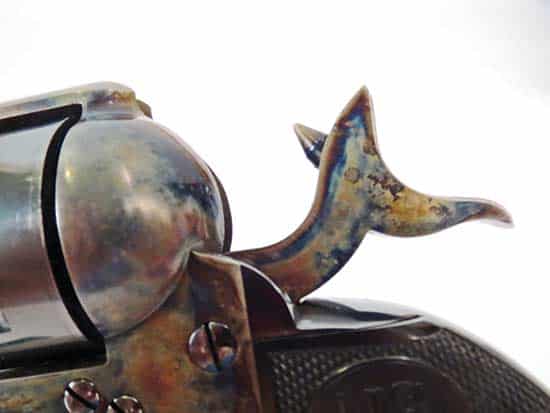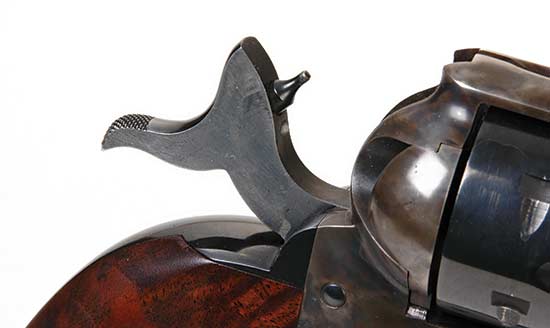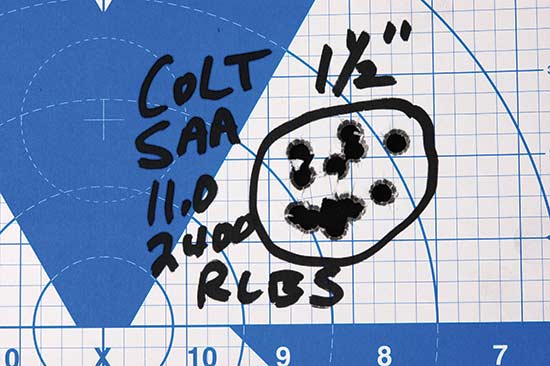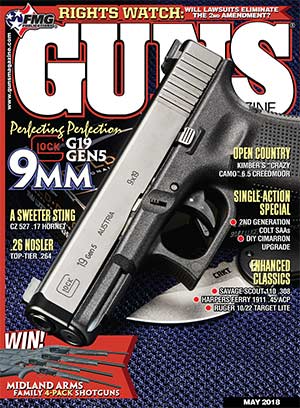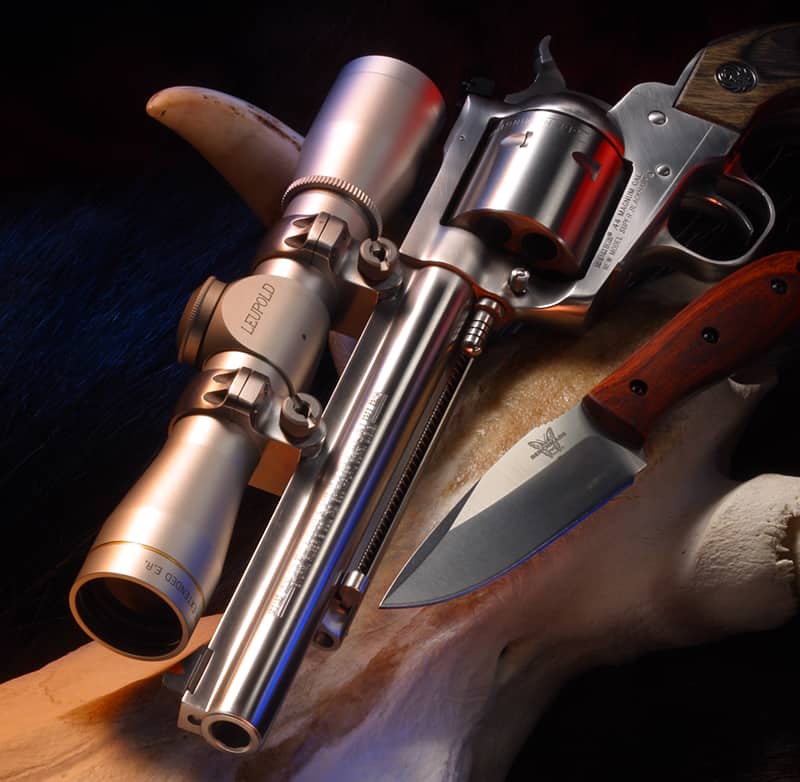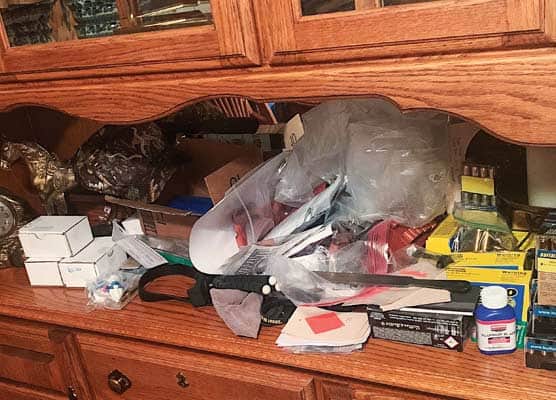Colt’s Greatest Generation?
Making The Case For 2nd Gen Peacemakers
In the January issue I did a feature on Colt’s 3rd Generation of Single Action Army sixguns. So it’s only fitting to discuss their immediate predecessor—the 2nd Generation. Some even consider the 2nd Generation guns the best of all three generations.
With the nationwide popularity of television exploding in the early 1950s, various TV production companies focused on a topic that had always been popular on cinema screens—the American West. I was a youth at that time but well remember Maverick, Wagon Train, Have Gun Will Travel, and my all-time favorite, Cheyenne. And for good guys and bad guys, the featured handgun was always the Colt Single Action Army.
A New Beginning
After the discontinuance of the SAA circa 1941, there was a period of time when they were about as worthless as worn-out shoes. Stories abound of them selling for a few bucks or being thrown out in barns to tarnish and rust. But all this came to an end in the 1950s. Suddenly those Colt Single Actions became collectibles. Prices skyrocketed.
Evidently somebody at Colt was alert. They smelled a market. Most of the machinery used to produce the SAA was intact. It had just been stored away to make room for World War II’s emergency production of military arms. Colt’s workmen set things up and by 1956 were putting brand new SAAs out the door. Whereas SAA serial numbers up to 1941 were simply numbers, those of new production were given a suffix of SA to differentiate the two generations.
There is an excellent book (out of print but available here and there) called Colt SAA Postwar Models by George Garton. It contains very interesting statistics and information about the 2nd Generation. The numbers regarding production totals shown before were drawn from the book.
Barrel Lengths, Calibers
As reintroduced, these brand new Peacemakers were exactly as they had been made in the last few years up to 1941. Barrel lengths were 5.5 and 7.5 inches. The very popular 4.75-inch length didn’t reappear until 1958. Finish was color-case hardened frame with all else blued. Hammers were polished brightly on their sides but blued on top. Nickel plating came back in 1957. Grips were the checkered hard rubber as had been standard as far back as 1900. Initially, firing pins were even the cone shaped types used from 1873 to 1941. When those were used up the tapered type was instituted and remains to this day. Chamberings were .45 Colt and .38 Special.
Prices were pretty hefty for the mid-1950s at $125. I have an original Colt price list dated January 1, 1939. The SAA in it is listed at $37.50, for all barrel lengths, calibers and finishes. By comparison, Colt’s Government Model was $41.50. SAA caliber options at the time were .32-20, .38 Special, .357 Magnum, .38-40, .44 Special, .44-40 and .45 Colt.
According to Garton’s book, in 1958 the .44 Special was revived as a caliber option but this following fact is interesting. It was never available with a 4.75-inch barrel on the 2nd Generation. Oddly, .44 Special was a poor seller in 2nd Generation SAAs with only 2,074 being made before it was dropped in 1967. In comparison, 10,591 were made as .38 Specials before it was dropped in 1964. The .357 Magnum was added in 1960 and stayed in production until the end of 2nd Generation production in 1974. A total of 15,841 were made. Of course, .45 Colt was the leader in popularity as it always had been. In 2nd Generation 34,297 were made as .45s. (Commemorative numbers and statistics are not included in Garton’s charts).
The year after the Peacemaker reintroduction Colt began offering the Buntline version with 12-inch barrel. Despite the TV program about Wyatt Earp that inspired Buntlines, they didn’t sell well. Only 4,059 were made according to Garton.
Another non-standard barrel length was 3 inches and given its own name of “Sheriff’s Model.” All 503 produced were in .45 Colt and made for one retail outlet in 1960.
By 1974 Colt’s production of SAAs of all configurations, calibers and options was very low. Furthermore, the machinery was worn. They shut down Peacemaker production for retooling and remodeling. Sources vary but serial numbers had reached somewhere in the 73000SA to 74000SA range.
Catching the Colt Fever
In 1964 a total of 283 SAAs had been made with blue/case color finishes, .45 Colt for chambering and 5.5-inch barrel lengths. The very first Colt SAA I held became the very first one I owned and it was one of those 283. That was in June 1968. It was very slightly used and cost me $100 which was a lot for someone pushing freight around on a loading dock for $1.60 per hour. I was so thrilled to own a Colt .45 that I remembered a single factory cartridge in my small stash of odds and ends, found it and then drove out of town to shoot it in a tree stump. Buying the .45 had cleaned me out financially, so two weeks had to pass before I got paid again and could buy a box of factory loads.
Later that summer between ending my summer job and starting the semester at Marshall University in Huntington, WV, I managed to put enough money aside for a bullet mould, sizing die and reloading dies. That SAA had started out in my hands in pristine condition but the many hundreds—perhaps thousands—of rounds fired had taken a toll. By the time I sold the gun in 1977, little finish remained. It went for $250 so I could buy a .222 Remington Model 700 for varmint hunting.
In the winter of 1970 I dropped out of college because I couldn’t decide on a major. Working at a Coca-Cola bottling company I was now making $1.65 an hour. In May of that year I turned 21 and was hot to buy my first over-the-counter handgun. Almost simultaneously I got word that Mack & Dave’s, a retail store in Huntington, had gotten a variety of Colt SAAs in. The assortment included nickeled and blue/case color finishes and all three standard barrel lengths. The only calibers offered, however, were .357 Magnum and .45 Colt.
As soon as possible I drove to Huntington and agonized till closing time as to whether I wanted a .45 or .357. Long before, I had settled on 4.75-inch as my next barrel length. Finally I chose a .357 and regretted it before I even got home. It just didn’t feel right as to balance. I sold that Colt in 1972, bought it back in 1976, sold it again in 1977 and bought it back again in 1996. It’s still here with its original box wearing a price tag of $194.95. By Garton’s book it was one of 596 made just like it in 1970.
Back in school in 1971, I was majoring in journalism so I could become a gun’riter. And again at Mack & Dave’s I spotted a treasure. It was a nickel-plated .38 Special SAA with a 4.75-inch barrel. I don’t remember its price tag but the gun department manager, Bill Morrison, said he would trade it for a new-in-box S&W Model 39 9mm. It may be hard to envision for younger readers that in those days it was somewhat difficult to get new S&Ws. I found a Model 39 in just a couple of days, paying $125 for it. True to his word, Bill handed over the Colt in a straight-across trade. It stayed with me till 1973 and was then sold for $150. It wasn’t till a decade later that I discovered that only 113 like it had been made.
I’ve owned many more 2nd Generation SAAs. In fact late in 2017 I bought a 7.5-inch nickel-plated .45 made in 1972. Only 1,437 were made like that between 1956 and 1974 when 2nd Generation production ended. Serial numbers were somewhere between 73,000SA and 74,000SA. (Sources vary). And I know where one of those 2,074 .44 Specials is right now so the little wheels in my brain are turning.
It’ll suffice to say I never had a bad 2nd Generation SAA. Their actions may not have been light but none felt full of sand as they do now. All the .45s had excessively large cylinder chamber mouths but they still do now in 2017. And I never had to entertain the thought of twisting their barrels so as to get them hitting point of aim laterally as has been the case with many 3rd Generation ones.
Colt SAAs of the 2nd Generation were a class act.
